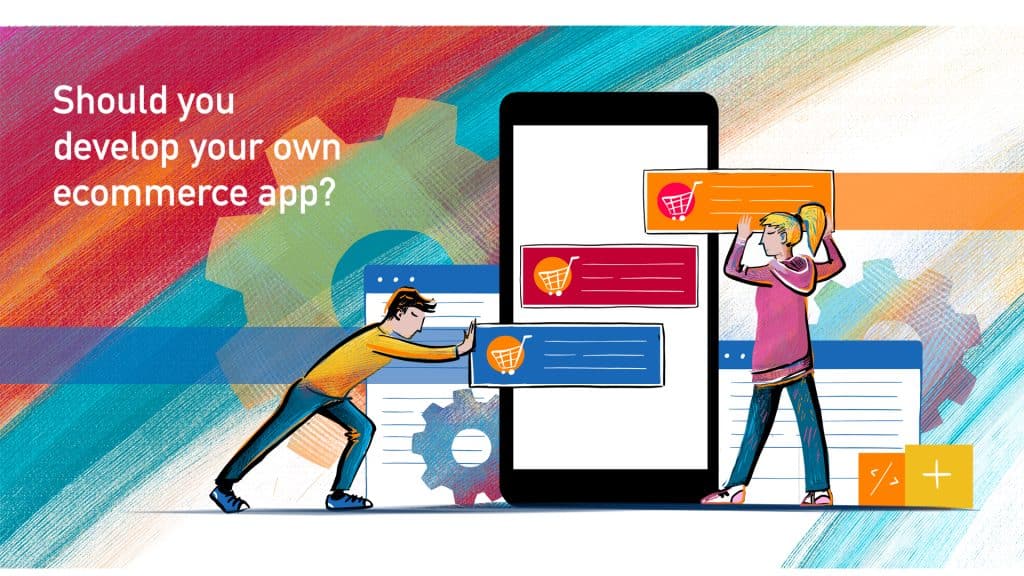
‘Mobile ecommerce,’ sometimes called ‘m-commerce,’ is a significant percentage of all online retail sales. According to some estimates, this is as much as 72.9% of the total ecommerce industry market share. With over 7 billion mobile users worldwide, this is a customer base you cannot afford to ignore.
For omnichannel ecommerce sellers, you must keep these mobile users front and center when creating your listings, designing your website, and considering creating a dedicated mobile app. The growth potential is real if you can properly target mobile shoppers and deliver a complete end-to-end shopping experience from shopping through fulfillment.
Omnichannel Listing Considerations for Maximizing Your M-commerce Potential
Becoming mobile-friendly starts with your listings. Every element of your catalog—from media to written content—needs to be as navigable and accessible on handheld screens as it is on a full-sized monitor. This has serious implications for your media- and text-based content creation strategies.
Mobile-Friendly Images
When it comes to images, touchscreen interfaces make it simple to tap, pinch, and swipe images to zoom and scroll them for a better look. That said if there are specific components or elements of your products that you want potential buyers to see and focus on, add images that are already zoomed in and focused on them.
This saves the user the hassle of investigating your catalog images themselves and eliminates the possibility that they may fail to notice crucial elements that make your product unique. This mobile-focused approach to the images that you choose will also translate to increased potential for social media marketing and sales.
Being able to accurately represent a product in a quick glimpse is what will lead users to stop scrolling and engage.
Video
Mobile users are accustomed to watching media on their phones and devices. A concise, well-polished video that includes the critical listing information, as well as your product in use, can save customers from having to scroll through your entire listing to make a purchasing decision.
This makes video a must for modern, mobile-friendly ecommerce. Furthermore, videos offer many of the same engagement-boosting features as images in social media marketing.
Optimized File Formats and Sizes
Speed is key on mobile devices. No matter a user’s reception or data plan, efficient use of video and image compression on mobile means that your catalog listings will load faster and interactions will be snappier. Striking the right balance between clarity and file size is an important consideration when optimizing listings for m-commerce.
Phone-Friendly Written Content
Modern SEO best practices are heavily influenced by the fact that more and more users interact with text primarily by scrolling through it on smaller screen devices. To make your written content particularly useful for mobile viewing, make sure that you are using headings, paragraph breaks, bullets, and typeface variations that allow users to scan and locate the information they are looking for.
Streamline the Purchasing Funnel
This should be a goal regardless of whether your customers are browsing from a computer or mobile device. Customers should be able to find the product they are looking for and get to a completed checkout in as few clicks as possible. This limits loading times and minimizes the opportunities for customers to change their minds and abandon their carts.
It is worth noting that when selling on third-party marketplaces, some of the aforementioned m-commerce elements are outside of your control. For instance, file sizes, compression, and acceptable media formats are usually strictly defined. That said, be sure to take control of the elements that you can to help optimize your conversion opportunities for mobile customers.
Of course, your first-party sales channels will likely offer you the greatest potential for m-commerce optimizations. You need to make the most of them.
Using Mobile to Generate First-Party Sales
Beyond your third-party marketplace listings, dedicated care and focus must be spent on the design decisions for your first-party shopping experiences. When customers come directly to you to make a purchase (or, even better, repeat purchases), they need to have experiences that make shopping and purchasing simple.
Whether it is from your brand’s ecommerce website or a mobile app, speed, organization, and convenience matter. The payoff is a direct relationship with customers that you cannot replicate through third-party channels.
You can generate actionable data, gain useful marketing insights, and grow as a brand. Now and moving forward, mobile ecommerce needs to be a tentpole of establishing and maintaining this relationship.
There are several considerations specific to your first-party presence that will help you create and maintain this mobile focus.
Responsive Design
One of the most critical components of effective mobile ecommerce is the UI. The browsing, account management, purchasing, and order tracking components must be easy to navigate, regardless of whether the customer is on a desktop or mobile device. That’s where the principle of responsive design comes in.
Responsive web design is a tenet of web development that allows the menus, images, videos, input fields, and written content to scale with the size of the browser window or screen resolution where the webpage is being displayed. Responsive design has been a common offering from web-hosting platforms, private developers, and ecommerce shopping carts for years, but there are still providers and templates that do not natively offer this feature.
For instance, while the Descartes Sellercloud-supported shopping cart platform Shopify offers uses a large variety of storefront themes to choose from (both free and paid), there are only certain templates that support a responsive design.

Should You Develop Your Own M-commerce App?
With mobile ecommerce continuing to surge in its market share, many ecommerce brands are weighing whether a responsive website is enough to maximize their m-commerce potential. In most cases, it is. Mobile browsers and modern web design best practices make for a snappy and intuitive mobile shopping experience.
What’s more, with mobile phones supporting the ability to turn a webpage bookmark into a tappable icon and most ecommerce applications operating as de-facto web browsers anyway, in many cases, the difference between offering your customers a responsive website and a mobile app is negligible.
An ecommerce website requires no installation on users’ devices, no cross-platform development to worry about, and no additional development teams to manage. However, mobile apps do open up features and marketing tools typically not available through a mobile website:
- Customizable push notifications.
- In-app communication options.
- First-party data collection opportunities.
- UI/UX options not available as in-browser features.
- Technological perks like AR and VR product previews.
Should you choose to go this route, Shopify’s Javascript Buy SDK is a solid starting point for embedding shopping cart functionality into your m-commerce app development. Additionally, Descartes Sellercloud’s integration with Shopify makes for a seamless handoff of order data to your warehouses and fulfillment teams to ensure that app-based purchases get handled with the same speed and efficiency as any of your other online sales conversions.
Whether you go the app route or focus on a webpage-based m-commerce strategy, you need to be sure that you can deliver for your mobile customers. Descartes Sellercloud’s inventory management platform can ensure that every order is received, fulfilled, and tracked quickly, efficiently, and reliably.
Our omnichannel-growth-focused approach means that you can be confident in your ability to reach and satisfy customers across all of the marketplaces and first-party channels where you sell.
Contact us directly for a free demo of how our product suite can streamline and simplify your online retail fulfillment workflows.




